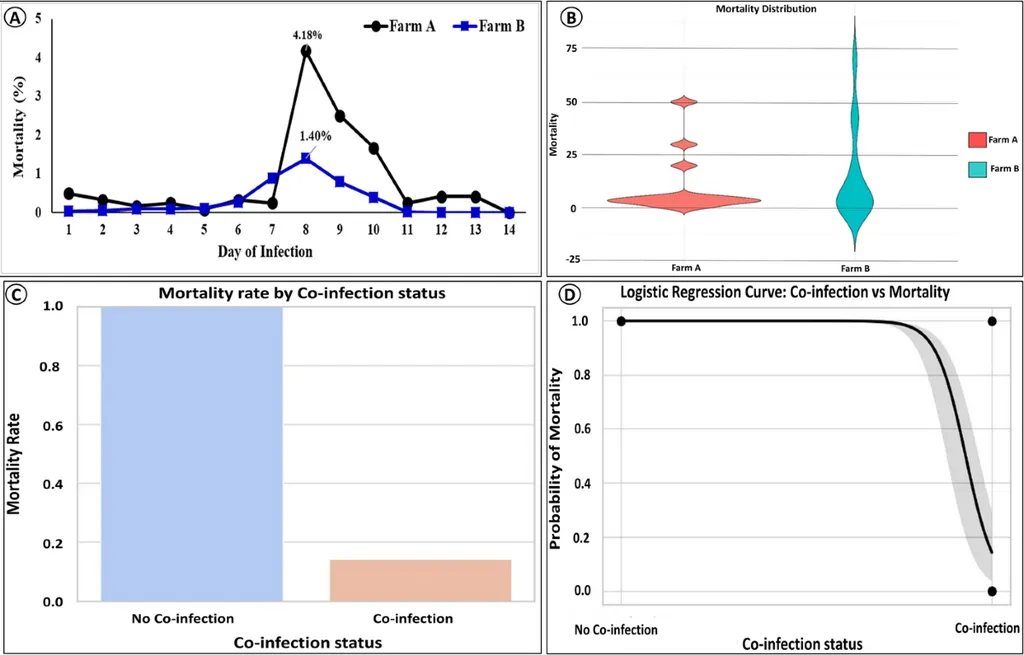In the heart of Jharkhand, India, an unusual case of concurrent infections in Rhode Island Red poultry has left scientists intrigued and questioning the dynamics of avian diseases. A recent study published in the journal ‘Discover Viruses’ (which translates to ‘Explore Viruses’ in English), led by Shreeniwas Singh from the College of Veterinary Science and Animal Husbandry, sheds light on an unexpected interaction between Highly Pathogenic Avian Influenza (HPAI) H5N1 virus and Salmonella pullorum.
The case study, which involved two farms housing mixed poultry flocks, revealed a puzzling pattern of low mortality rates despite the presence of two major poultry pathogens. Farm A had 1197 birds, including Rhode Island Red, Kadaknath, and White Leghorn breeds, while Farm B housed 5000 birds comprising commercial broilers, Sonali chicken breed, and Khaki Campbell ducks. Both farms maintained standard hygienic practices and used a deep litter system.
Initial investigations pointed towards a Salmonella infection, but further testing confirmed a co-infection with HPAI H5N1. Surprisingly, the overall mortality rate was a mere 5.60%, and the losses were observed only in the Rhode Island Red birds. “This is quite unusual,” Singh noted. “Typically, HPAI H5N1 infections can lead to high mortality rates, often up to 100% in some cases. The low mortality rate and the breed-specific pattern observed here are intriguing.”
The study’s findings suggest that the co-infection might have reduced the virus’s spread, severity, and mortality in Rhode Island Red poultry. This unexpected interaction could have significant implications for the poultry industry, particularly in regions where both pathogens are prevalent.
From a commercial perspective, understanding these dynamics can help farmers and veterinarians implement more effective disease management strategies. “This research opens up new avenues for exploring the interplay between different pathogens in poultry,” Singh explained. “It could lead to the development of more targeted and efficient control measures, ultimately reducing economic losses in the poultry sector.”
The study also highlights the importance of robust surveillance and immediate infection control measures. Upon confirmation of HPAI H5N1, the farms implemented culling, disinfection, movement restrictions, and surveillance to prevent the outbreak’s spread.
As the world grapples with the challenges posed by avian diseases, this case study offers a glimpse into the complex world of poultry pathogens. It underscores the need for continuous research and vigilance to protect both animal and human health. The findings could shape future developments in disease control strategies, potentially revolutionizing how the poultry industry manages and mitigates outbreaks.
In the ever-evolving landscape of agricultural technology and disease management, this research serves as a reminder of the intricate and often surprising dynamics at play in the world of poultry health. As Singh and his team continue to unravel these complexities, the industry watches closely, eager to harness these insights for a more resilient and sustainable future.

